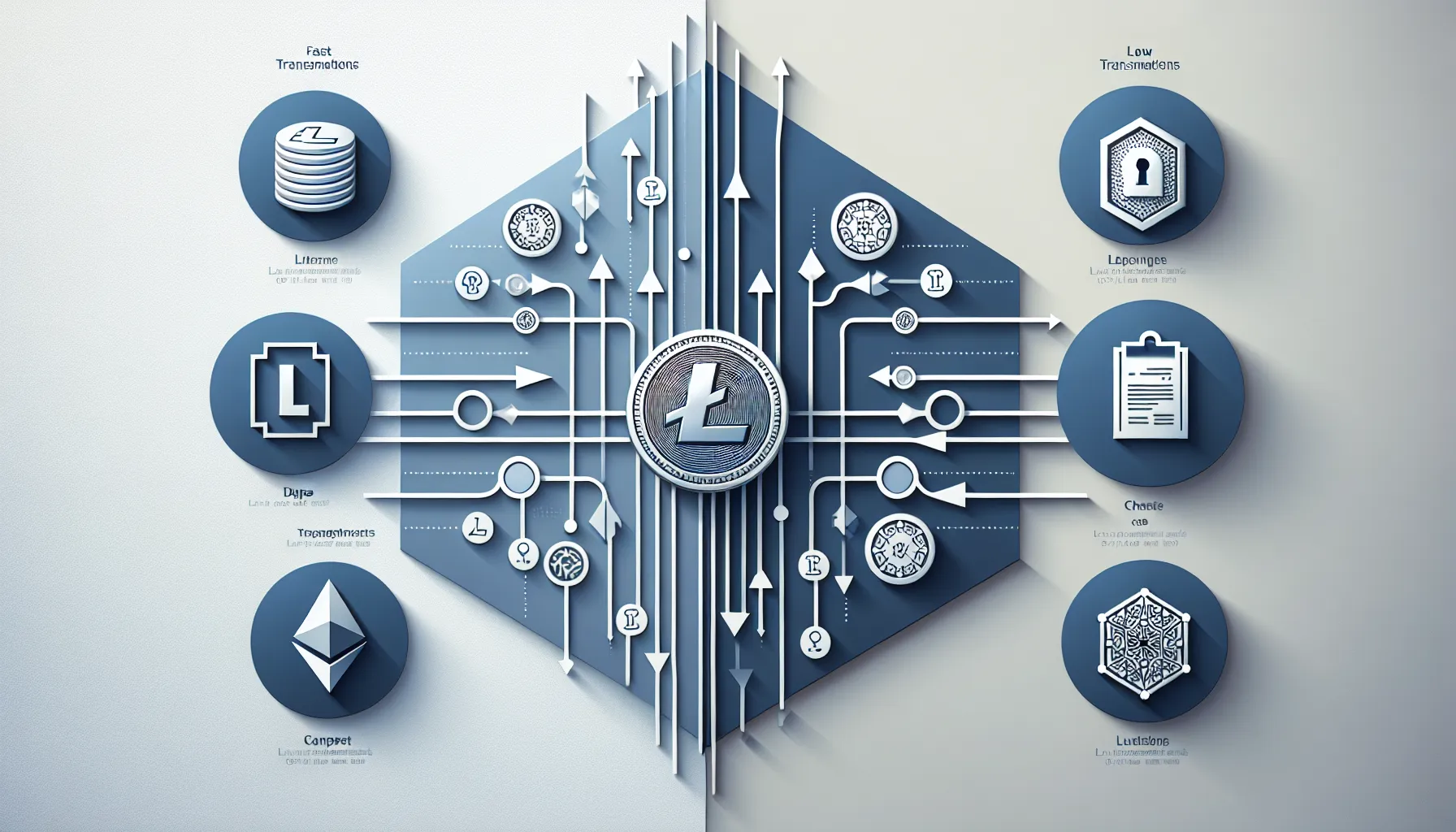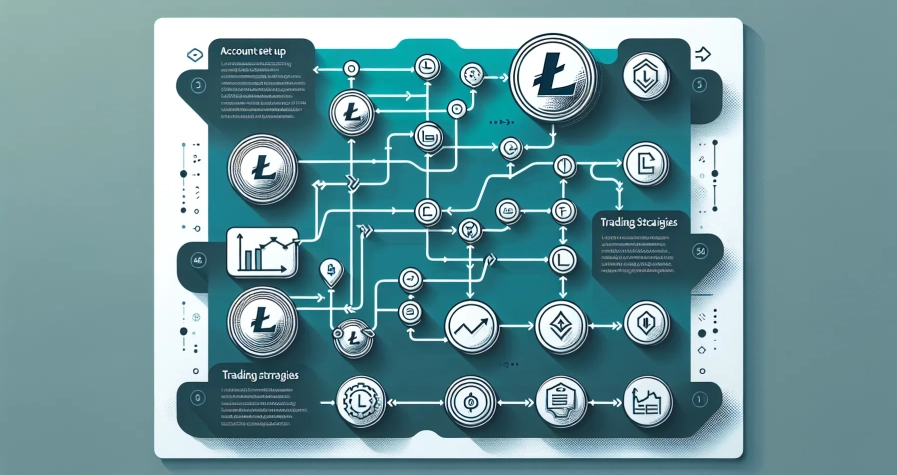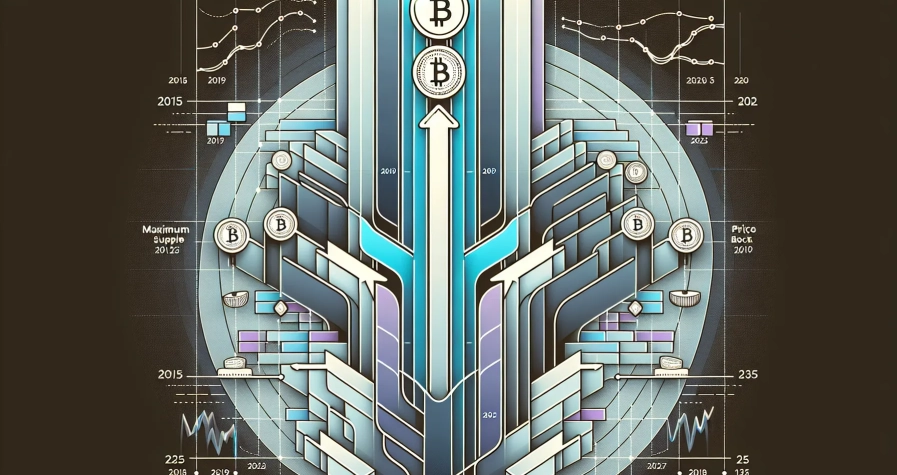Stepping into the world of cryptocurrency can feel like wandering into a foreign land,there’s new terminology, unfamiliar technology, and dozens of coins competing for attention. Two names that consistently appear near the top of the list are Litecoin and Ethereum. But for someone just getting started, which one makes more sense?
The answer isn’t as simple as picking the “best” coin. Litecoin and Ethereum were built for entirely different purposes. Litecoin emerged as a faster, lighter alternative to Bitcoin, designed primarily for peer-to-peer transactions. Ethereum, on the other hand, introduced a whole new category of blockchain functionality,smart contracts and decentralized applications that power everything from DeFi protocols to NFT marketplaces.
For beginners, understanding these differences is crucial. Choosing between them depends on what someone wants to do: make simple, low-cost transactions, or jump into a broader ecosystem with more complexity and potential. This guide breaks down the essentials of each cryptocurrency, compares their key features, and helps beginners decide which one aligns best with their goals and comfort level.
Key Takeaways
- Litecoin vs Ethereum comes down to purpose: Litecoin is designed for fast, low-cost peer-to-peer payments, while Ethereum powers smart contracts, DeFi, and NFTs.
- Litecoin offers beginners simplicity with consistently low transaction fees (often just cents) and a straightforward focus on transferring value without complexity.
- Ethereum provides access to a vast ecosystem of decentralized applications and DeFi protocols, but comes with higher fees, greater volatility, and a steeper learning curve.
- Choosing between Litecoin and Ethereum depends on your goals—opt for Litecoin if you want predictable, payment-focused crypto, or Ethereum if you’re ready to explore blockchain’s broader potential.
- Beginners don’t have to choose just one: starting with Litecoin to learn the basics, then gradually exploring Ethereum, offers a balanced approach to entering the crypto space.
Understanding Litecoin: The Basics
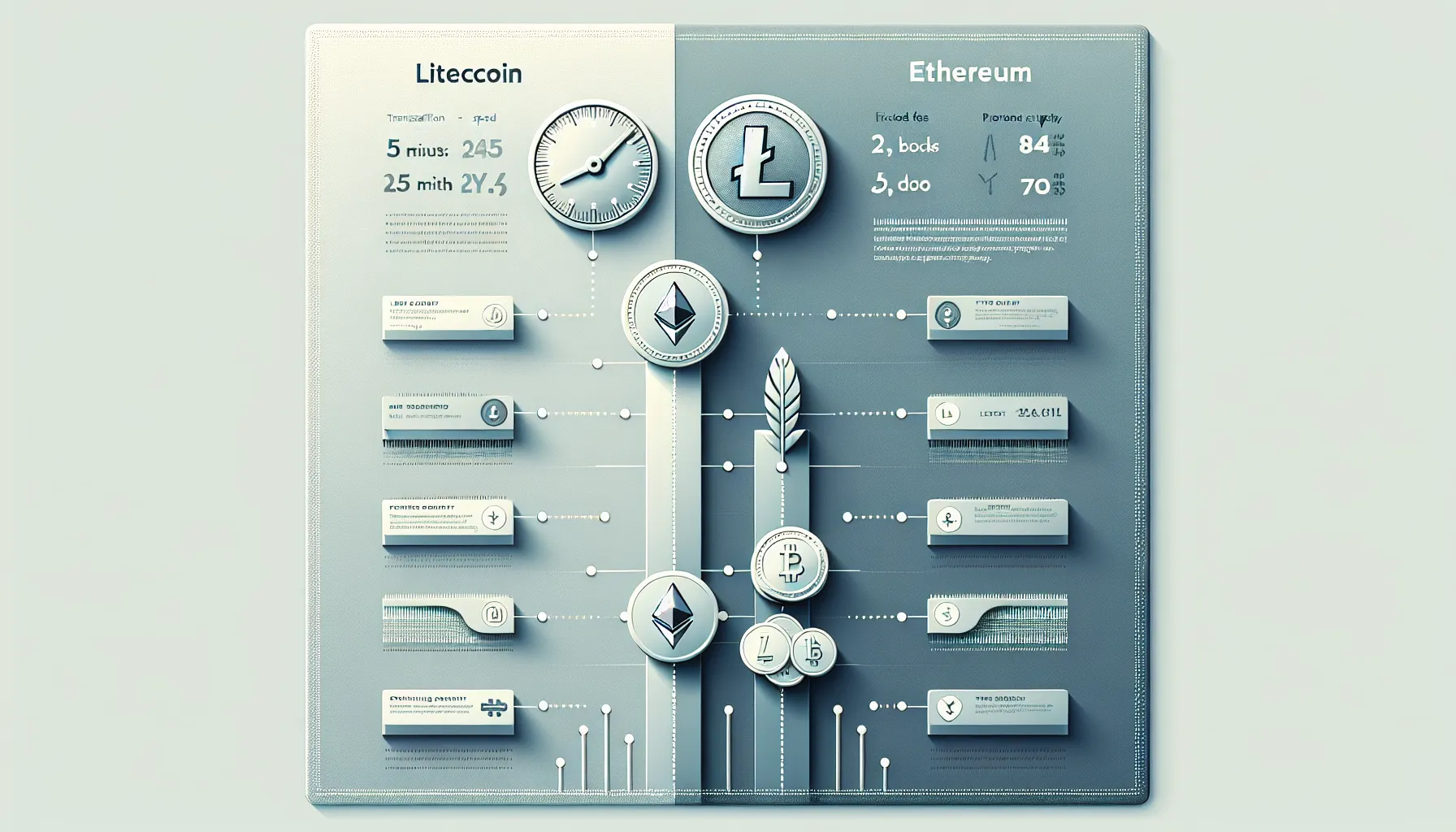
Litecoin entered the scene in 2011, created by Charlie Lee, a former Google engineer. The goal was straightforward: improve on Bitcoin’s limitations, particularly around transaction speed and cost. While Bitcoin was gaining recognition as digital gold, Litecoin positioned itself as “digital silver”,a practical, everyday alternative for payments.
The key technical difference lies in Litecoin’s use of the Scrypt mining algorithm instead of Bitcoin’s SHA-256. This choice was intended to make mining more accessible to everyday users with standard hardware. Litecoin also reduces block confirmation time to approximately 2.5 minutes, compared to Bitcoin’s 10 minutes. That means transactions get verified and settled faster, which matters when someone’s trying to buy something or send money without waiting around.
Litecoin’s blockchain operates on a Proof-of-Work consensus mechanism, similar to Bitcoin, but its lighter computational requirements and faster block times make it more efficient for transactional use. For beginners, this translates into a cryptocurrency that behaves predictably and focuses on one clear function: transferring value quickly and cheaply.
What Makes Litecoin Unique?
Several features distinguish Litecoin from other cryptocurrencies and make it appealing for newcomers:
Speed and Efficiency
Litecoin’s 2.5-minute block time means transactions confirm roughly four times faster than Bitcoin. For someone sending funds or making a purchase, this speed difference can be noticeable and convenient.
Low Transaction Fees
One of Litecoin’s strongest selling points is its consistently low fees. Even during periods of high network activity, Litecoin transactions remain affordable, often costing just a few cents. This makes it practical for smaller transactions that wouldn’t make sense with higher-fee networks.
Fixed Supply
Litecoin has a maximum supply cap of 84 million coins,exactly four times Bitcoin’s 21 million. This scarcity is built into the protocol and gives Litecoin a deflationary quality. As more coins are mined over time, the rate of new supply slows, which can create upward price pressure if demand holds steady or grows.
Proven Track Record
With over a decade of operation, Litecoin has demonstrated reliability and security. It’s weathered market cycles, maintained consistent development, and avoided major technical failures. For beginners wary of newer, experimental coins, Litecoin’s longevity offers reassurance.
Simplicity of Purpose
Litecoin doesn’t try to do everything. It’s designed for payments, and that singular focus makes it easier to understand. There are no smart contracts, no dApps, and no complex ecosystem to navigate. A beginner can grasp what Litecoin does in a matter of minutes.
Understanding Ethereum: The Basics
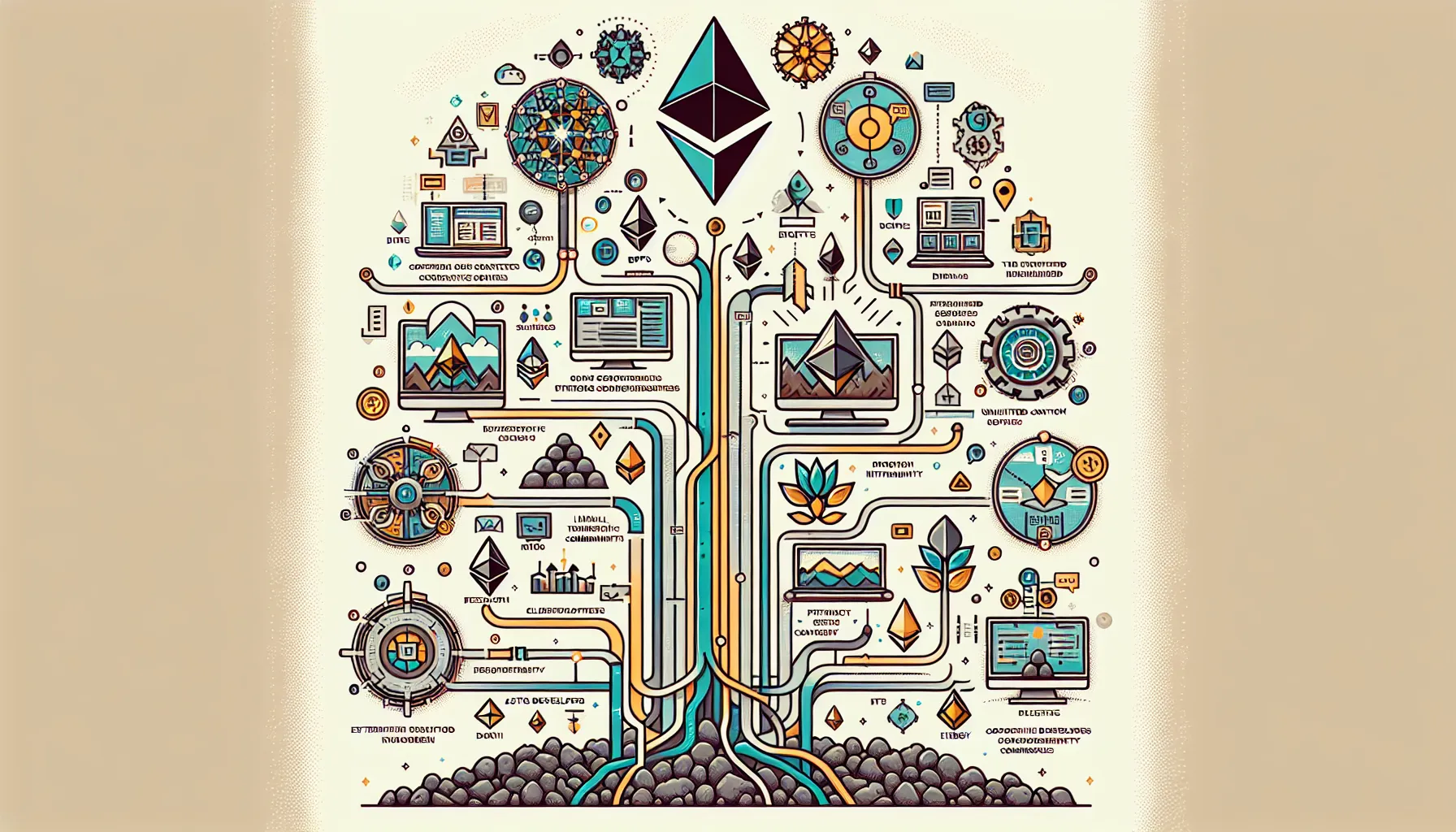
Ethereum launched in 2015 with a vision that went far beyond simple transactions. Conceived by Vitalik Buterin and a team of developers, Ethereum introduced the concept of a programmable blockchain,one where developers could build decentralized applications (dApps) and execute self-enforcing agreements called smart contracts.
While Bitcoin and Litecoin focus on transferring value, Ethereum focuses on enabling functionality. Its native currency, Ether (ETH), serves as the fuel that powers the network. Users pay transaction fees (known as “gas”) in Ether whenever they interact with smart contracts or move funds. But Ether itself is just one piece of a much larger ecosystem.
Ethereum’s blockchain has become the foundation for decentralized finance (DeFi), non-fungible tokens (NFTs), decentralized autonomous organizations (DAOs), and countless other applications. This versatility has made Ethereum the second-largest cryptocurrency by market cap and the most widely used platform for blockchain development.
In 2022, Ethereum completed a historic transition from Proof-of-Work to Proof-of-Stake through an upgrade known as “The Merge.” This shift dramatically reduced the network’s energy consumption and set the stage for future improvements in scalability and efficiency. For beginners, this means Ethereum is actively evolving, which brings both opportunity and complexity.
What Makes Ethereum Unique?
Ethereum’s distinguishing features make it a fundamentally different kind of cryptocurrency:
Smart Contracts
Smart contracts are self-executing programs that run on the Ethereum blockchain. They automatically enforce agreements without needing a middleman. This capability unlocks everything from automated lending protocols to decentralized exchanges and tokenized assets.
Decentralized Applications (dApps)
Thousands of dApps run on Ethereum, spanning finance, gaming, social media, and more. These applications operate without centralized control, offering users greater transparency and often lower fees than traditional services.
DeFi and NFT Ecosystem
Ethereum is the dominant platform for decentralized finance, where users can lend, borrow, trade, and earn interest without banks. It’s also the primary network for NFTs, digital assets representing art, collectibles, and virtual real estate. This ecosystem is vast and constantly growing.
No Supply Cap
Unlike Litecoin, Ethereum has no maximum supply. New Ether is issued to validators who secure the network, though recent upgrades have introduced mechanisms to burn (destroy) a portion of transaction fees, creating deflationary pressure. The lack of a hard cap can be a point of concern or opportunity, depending on one’s perspective.
Active Development Community
Ethereum boasts one of the largest and most active developer communities in crypto. Continuous upgrades and improvements mean the network is always evolving. For beginners, this translates to a platform with long-term relevance but also a steeper learning curve.
Proof-of-Stake Transition
The shift to Proof-of-Stake reduced Ethereum’s energy consumption by over 99% and opened the door for staking rewards. Users can now lock up their Ether to help secure the network and earn passive income, adding another layer of utility.
Key Differences Between Litecoin and Ethereum
At first glance, Litecoin and Ethereum might seem like they’re just two coins competing in the same space. But their core purposes, technical designs, and ecosystems couldn’t be more different. Understanding these distinctions is essential for beginners trying to decide which one fits their needs.
| Feature | Litecoin | Ethereum |
|---|---|---|
| Primary Use Case | Peer-to-peer payments | Smart contracts, dApps, DeFi, NFTs |
| Consensus Mechanism | Proof-of-Work (Scrypt) | Proof-of-Stake |
| Block Time | ~2.5 minutes | ~12-15 seconds |
| Supply Cap | 84 million LTC | No fixed cap |
| Transaction Fees | Consistently low | Variable, can be high |
| Complexity | Simple, payment-focused | Complex, multi-functional |
| Developer Ecosystem | Limited | Large and active |
Litecoin is laser-focused on being a medium of exchange. It’s designed to move value quickly and affordably, without the bells and whistles. Ethereum, by contrast, is a platform for building and running decentralized applications. It’s not just about sending money,it’s about enabling entirely new kinds of digital interaction.
Transaction Speed and Costs
Transaction speed and cost are two of the most practical considerations for beginners.
Litecoin
Litecoin’s 2.5-minute block time makes it significantly faster than Bitcoin, though still slower than Ethereum. But, what Litecoin lacks in raw speed, it makes up for in cost predictability. Fees typically hover in the range of a few cents, even during busy periods. For someone who wants to send $20 to a friend or pay for a purchase, Litecoin’s low fees make it a sensible choice.
Ethereum
Ethereum’s block time is much faster,around 12 to 15 seconds. Transactions confirm quickly, which is essential for the complex interactions that happen within dApps and smart contracts. But speed comes with a trade-off: gas fees. During periods of high network demand, Ethereum’s fees can spike dramatically, sometimes reaching $20, $50, or more for a single transaction. For small transactions, this can be prohibitively expensive.
Recent upgrades and layer-2 solutions (like Arbitrum and Optimism) have helped mitigate Ethereum’s fee problem, but for absolute beginners who just want to move funds without worrying about fluctuating costs, Litecoin’s simplicity is hard to beat.
Use Cases and Functionality
The use case difference is where Litecoin and Ethereum truly diverge.
Litecoin’s Use Cases
Litecoin excels at straightforward, peer-to-peer transactions. It’s ideal for:
- Sending money to friends or family across borders
- Making online purchases with merchants that accept crypto
- Holding as a store of value with a capped supply
- Testing or learning about cryptocurrency without dealing with complexity
Litecoin doesn’t support smart contracts or dApps. Its blockchain is intentionally simple, which limits what it can do but also makes it easier to use and understand.
Ethereum’s Use Cases
Ethereum’s functionality extends far beyond payments:
- DeFi protocols: Users can lend, borrow, trade, and earn interest without traditional banks.
- NFTs: Artists, creators, and collectors use Ethereum to mint and trade unique digital assets.
- Decentralized exchanges (DEXs): Platforms like Uniswap let users swap tokens without a centralized intermediary.
- DAOs: Decentralized organizations governed by code and community voting.
- Gaming and metaverse applications: Virtual worlds and play-to-earn games built on Ethereum’s infrastructure.
For someone interested in exploring the broader potential of blockchain technology, Ethereum offers an almost limitless playground. But that versatility comes with complexity that can overwhelm newcomers.
Ease of Use for Beginners
Ease of use is a critical factor for anyone new to cryptocurrency. Both Litecoin and Ethereum are accessible, but the experience differs based on what a beginner wants to accomplish.
Litecoin’s Simplicity
Litecoin’s single-purpose design makes it one of the most beginner-friendly cryptocurrencies. A new user can download a wallet, buy some Litecoin on an exchange, and send it to another wallet without needing to understand gas fees, smart contracts, or network congestion. The learning curve is gentle, and mistakes are less costly.
Ethereum’s Complexity
Ethereum offers more possibilities, but that comes with added complexity. Beginners need to understand gas fees, wallet compatibility with different tokens (ERC-20, ERC-721), and how to interact with dApps. Mistakes,like sending tokens to the wrong address or approving a malicious smart contract,can be expensive. For someone willing to invest time in learning, Ethereum opens up a world of opportunity. For someone who just wants to dip their toes in, it can feel overwhelming.
Buying and Storing Litecoin
Buying Litecoin is straightforward. It’s listed on virtually every major cryptocurrency exchange, including Coinbase, Binance, Kraken, and Gemini. A beginner can create an account, verify their identity, and purchase Litecoin with a credit card or bank transfer in minutes.
Storage options include:
- Hardware wallets (like Ledger or Trezor) for maximum security
- Software wallets (desktop or mobile apps) for everyday convenience
- Exchange wallets for simplicity, though less secure for long-term holding
Litecoin’s wallet ecosystem is mature and user-friendly. Most wallets support Litecoin natively, and setup is typically quick and intuitive.
Buying and Storing Ethereum
Ethereum is equally accessible on major exchanges. In fact, because of its prominence, it often has higher liquidity and more trading pairs than Litecoin. Buying Ether follows the same process: sign up, verify, deposit funds, and purchase.
Storage requires a bit more consideration:
- Hardware wallets support Ethereum and ERC-20 tokens
- Software wallets like MetaMask are essential for interacting with dApps
- Exchange wallets work for holding Ether, but users will need a compatible wallet to access DeFi or NFT platforms
MetaMask, in particular, is a gateway to the Ethereum ecosystem. It’s a browser extension wallet that connects to decentralized applications, making it indispensable for anyone exploring beyond simple transactions. But it also introduces another layer of complexity compared to a basic Litecoin wallet.
Investment Potential and Risk Considerations
From an investment standpoint, Litecoin and Ethereum occupy different risk-reward profiles.
Ethereum’s Growth Potential
Ethereum’s expansive ecosystem gives it significant upside potential. As DeFi and NFTs continue to grow, demand for Ether increases. Ethereum’s role as the backbone of Web3 development positions it as a long-term player in the blockchain space. Institutional interest has grown, and Ethereum’s market cap consistently ranks second only to Bitcoin.
But, Ethereum’s volatility is higher. Price swings can be dramatic, influenced by network upgrades, regulatory news, or shifts in DeFi activity. For beginners, this means higher potential returns but also greater risk.
Litecoin’s Stability
Litecoin is generally less volatile than Ethereum. Its focus on payments and established track record appeal to risk-averse investors. Litecoin’s capped supply and scarcity model offer a store-of-value proposition similar to Bitcoin, though on a smaller scale.
That said, Litecoin’s utility is more limited. It doesn’t have the same growth catalysts as Ethereum, and its market cap has remained relatively stable compared to newer, more innovative projects. For beginners looking for steady, predictable exposure to crypto, Litecoin is safer. For those willing to accept volatility in exchange for growth potential, Ethereum is more compelling.
Risk Considerations
Both cryptocurrencies carry risks inherent to the broader crypto market: regulatory uncertainty, technological vulnerabilities, and market speculation. Ethereum’s complexity adds additional risk,smart contract bugs, high gas fees during congestion, and the evolving nature of the platform. Litecoin’s simplicity reduces some of these risks but limits upside.
Beginners should only invest what they can afford to lose and consider diversifying rather than going all-in on a single asset.
Which Should Beginners Choose?
The choice between Litecoin and Ethereum eventually depends on a beginner’s goals, interests, and risk tolerance.
Choose Litecoin if:
- The goal is to understand cryptocurrency through simple, low-cost transactions
- There’s interest in a payment-focused digital currency with a capped supply
- Minimizing complexity and fees is a priority
- The preference is for a stable, proven cryptocurrency with low volatility
- There’s no immediate interest in DeFi, NFTs, or dApps
Litecoin is ideal for someone who wants to learn the basics,how wallets work, how to send and receive funds, and how blockchain transactions are confirmed,without getting bogged down in technical details.
Choose Ethereum if:
- There’s curiosity about decentralized applications, smart contracts, or DeFi
- The beginner is willing to invest time in learning a more complex ecosystem
- Higher growth potential justifies accepting greater volatility
- Exploring NFTs, staking, or interacting with dApps is appealing
- Long-term interest lies in the broader blockchain and Web3 space
Ethereum suits beginners who are eager to explore beyond basic transactions and are comfortable with a steeper learning curve. It offers more opportunities but requires more effort and carries higher risk.
Why Not Both?
There’s no rule that says a beginner has to pick just one. Starting with Litecoin to learn the basics, then gradually exploring Ethereum as confidence builds, can be a smart, balanced approach. Diversification reduces risk and provides exposure to different aspects of the crypto landscape.
Conclusion
Litecoin and Ethereum serve distinct purposes, and the “better” choice depends entirely on what a beginner hopes to achieve. Litecoin offers simplicity, low fees, and a clear focus on payments, making it an excellent entry point for those new to cryptocurrency. Its straightforward design and reliable performance remove much of the intimidation that can accompany diving into digital assets.
Ethereum, on the other hand, opens the door to a vast ecosystem of decentralized applications, smart contracts, and innovative financial tools. It’s more complex, with higher fees and greater volatility, but it also offers significantly more functionality and growth potential. For beginners willing to embrace a learning curve, Ethereum provides a gateway into the cutting edge of blockchain technology.
Eventually, the best choice aligns with a beginner’s comfort level, interests, and goals. Those seeking simplicity and predictability will find Litecoin approachable and practical. Those eager to explore the broader possibilities of blockchain will find Ethereum endlessly engaging,and worth the extra effort. Either way, both cryptocurrencies offer valuable entry points into the world of digital assets, each with its own strengths and trade-offs.
Frequently Asked Questions
What is the main difference between Litecoin and Ethereum for beginners?
Litecoin is designed for simple, fast peer-to-peer payments with low fees, while Ethereum is a programmable blockchain platform that supports smart contracts, decentralized applications, DeFi, and NFTs. Litecoin prioritizes simplicity; Ethereum offers broader functionality with more complexity.
Which cryptocurrency has lower transaction fees, Litecoin or Ethereum?
Litecoin consistently has lower transaction fees, typically just a few cents even during high network activity. Ethereum’s gas fees are variable and can spike to $20 or more during congestion, though Layer-2 solutions have helped reduce costs.
Is Litecoin or Ethereum better for someone new to cryptocurrency?
Litecoin is better for beginners who want simplicity and low-cost transactions. Ethereum suits those willing to learn a more complex ecosystem with smart contracts and dApps. Your choice depends on whether you prioritize ease of use or broader blockchain exploration.
Can you mine Litecoin and Ethereum in 2025?
Yes, you can mine Litecoin using its Scrypt algorithm with standard hardware. However, Ethereum transitioned to Proof-of-Stake in 2022, meaning it can no longer be mined. Instead, users can stake Ether to secure the network and earn rewards.
Does Ethereum have a maximum supply like Litecoin?
No, Ethereum has no fixed supply cap, unlike Litecoin’s 84 million coin limit. New Ether is issued to validators, but Ethereum’s fee-burning mechanism introduced deflationary pressure, partially offsetting new issuance and affecting long-term supply dynamics.
What is the best wallet for storing Litecoin and Ethereum as a beginner?
For Litecoin, user-friendly software wallets or hardware wallets like Ledger work well. For Ethereum, MetaMask is essential for interacting with dApps, while hardware wallets provide secure long-term storage. Choose based on your security needs and intended usage.

